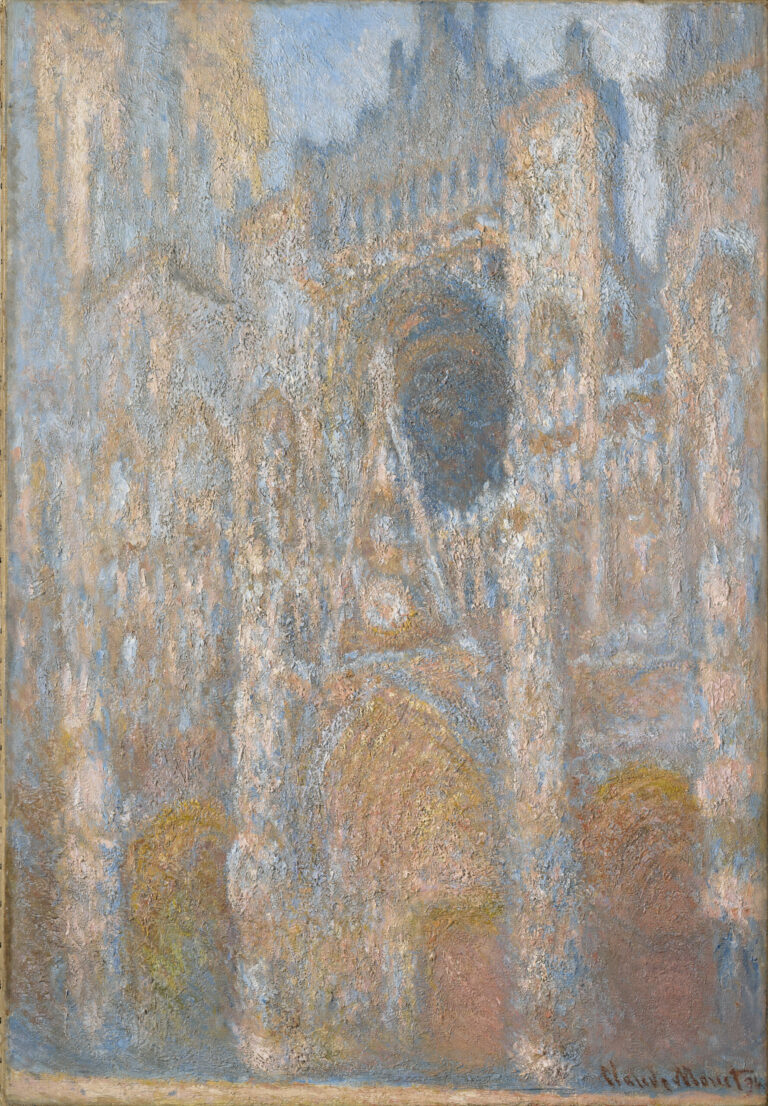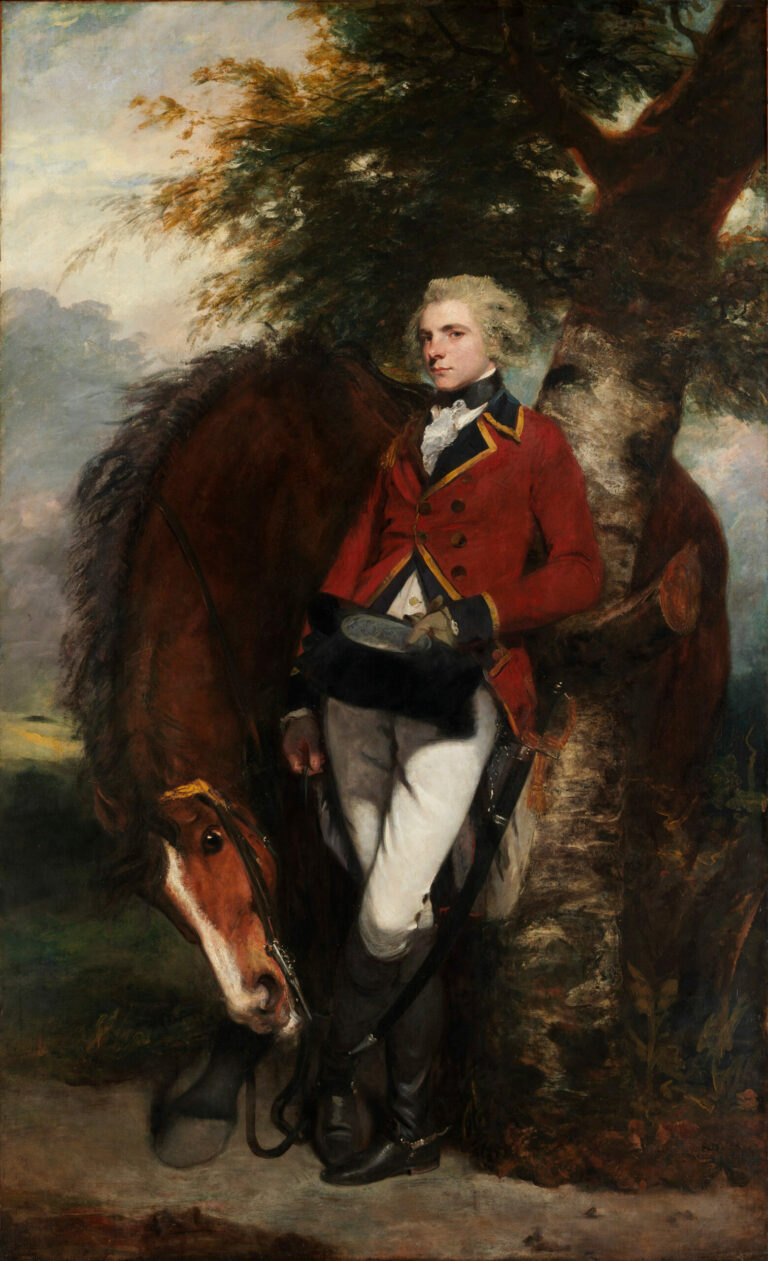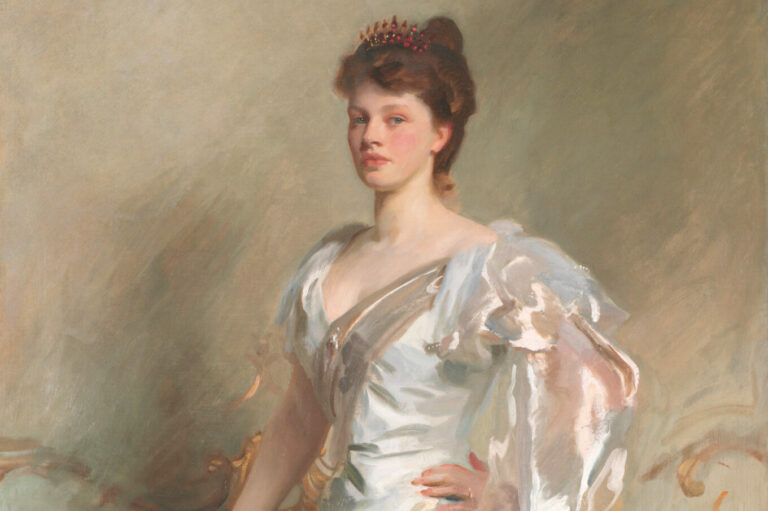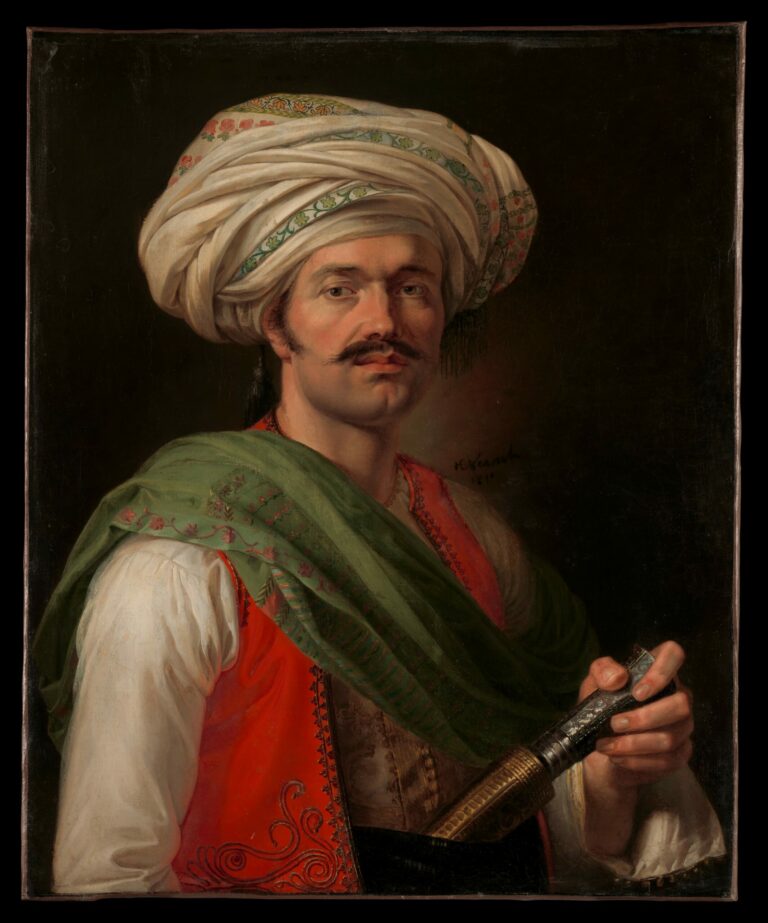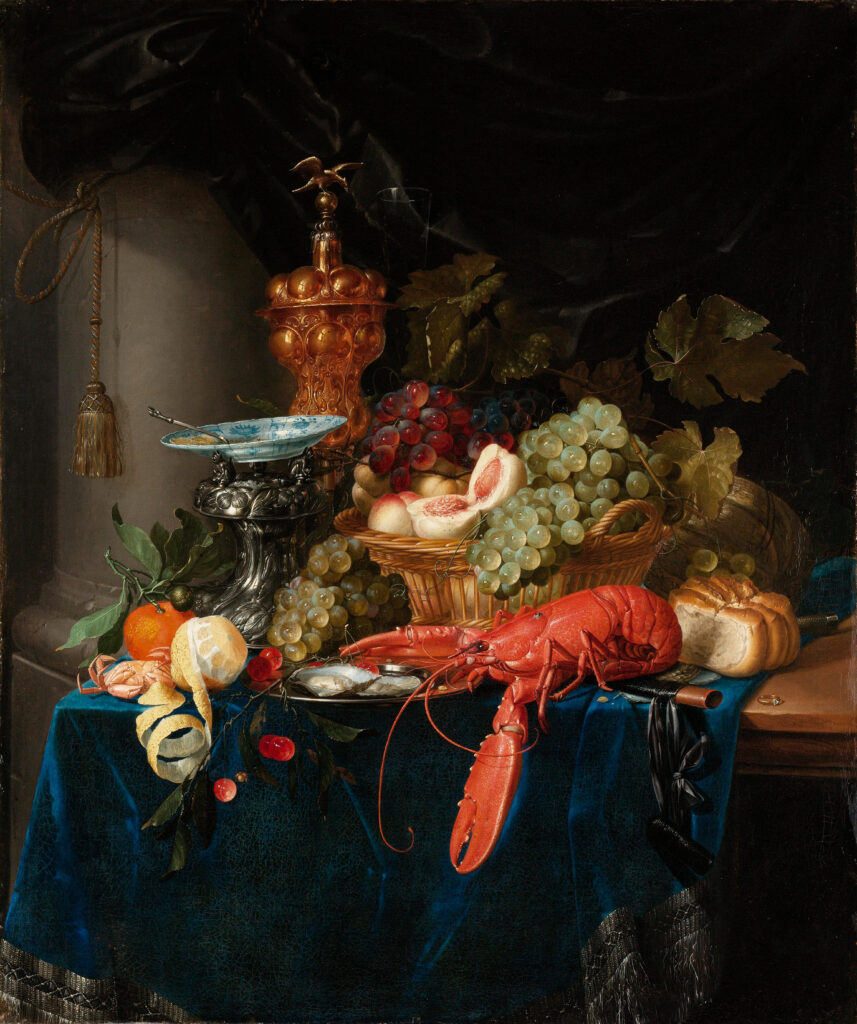
This virtuosic composition by Pieter de Ring, created around 1655-1660, transports us into the sumptuous world of the Dutch Golden Age. Each meticulously rendered object testifies to the wealth and refinement of Amsterdam’s merchant society.
The scarlet lobster, positioned in the foreground, captures our attention with its flamboyant color contrasting against the midnight blue velvet tablecloth. Behind it, a wicker basket overflows with translucent grapes and velvety peaches, while an ornately chased golden goblet rises like a piece of royal goldsmithery.
The painter excels in rendering textures: the delicate porcelain of the Chinese dish, the finely crafted silverware, the pearlescent flesh of oysters, and the tender crumb of the bread roll create a tactile symphony. Light, masterfully orchestrated from the left, reveals each detail with photographic precision: the reflections on the grapes, the pulp of the peeled lemon, the gleam of precious metal.
For Further Exploration
- Still Life with Golden Goblet, by Pieter de Ring, circa 1655-1660
- 101.2 x 84.7 cm
- The Rijksmuseum, Amsterdam
- https://www.rijksmuseum.nl/en/collection/object/Still-Life-with-Golden-Goblet–9eb9a945b17a9e634394c863f6f1d7cc
Pieter de Ring (1615-1660), a still life master from Leiden, specialized in these sumptuous compositions that rivaled those of Willem Kalf and Jan Davidsz de Heem. Having studied in the latter’s workshop, he developed a style of remarkable precision that earned him international recognition.
His works, true technical achievements, reflect the prosperity of the United Provinces in the 17th century, where the accumulation of exotic and precious goods became a symbol of social status. De Ring particularly excelled in the representation of metal objects and seafood, perfectly mastering the interplay of light and reflections that bring his silent yet eloquent compositions to life. He would become one of the founders of the Guild of Saint Luke in Leiden in 1648.


